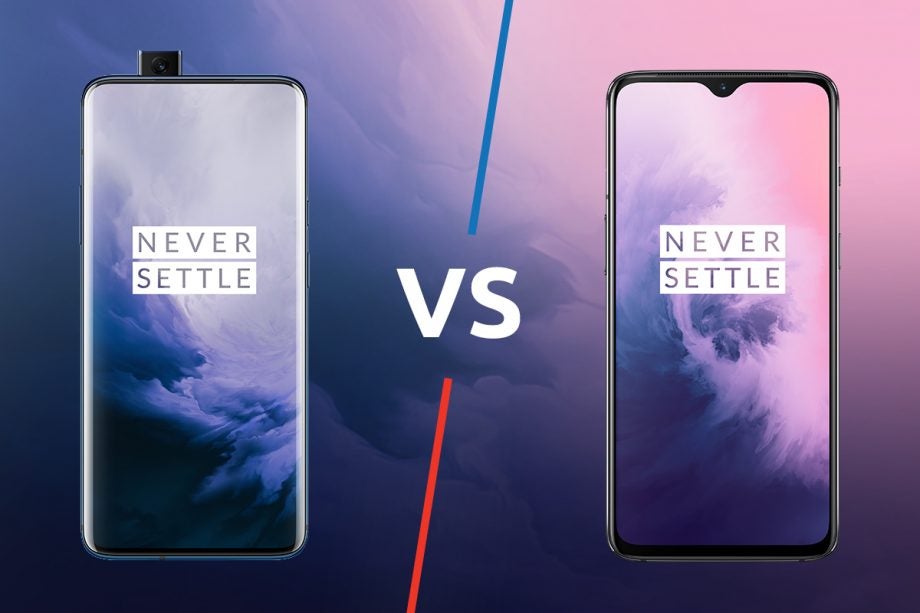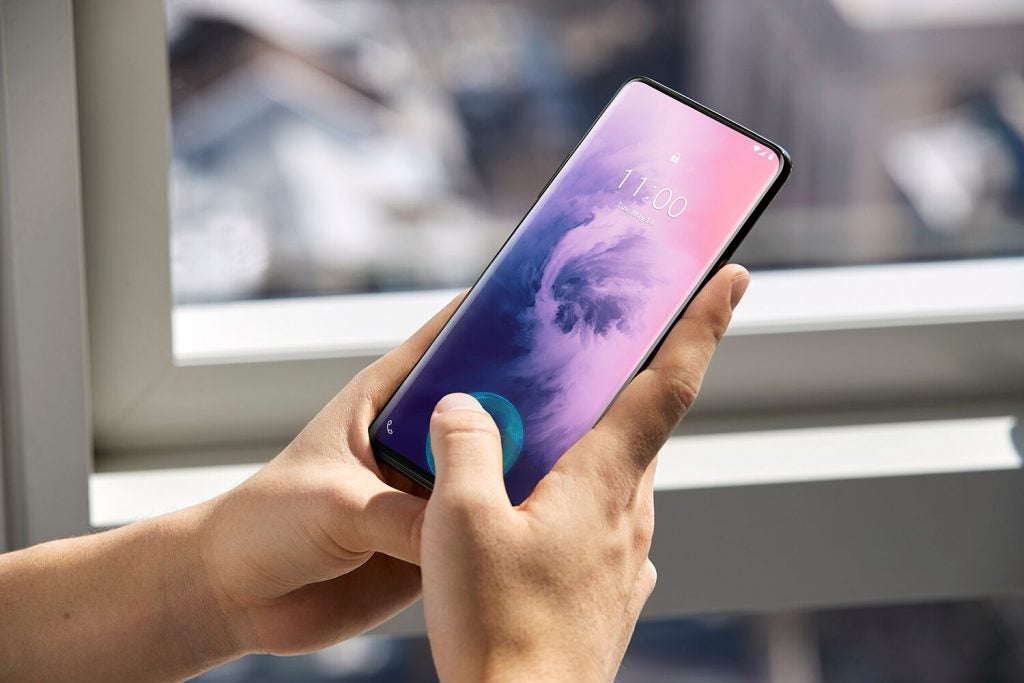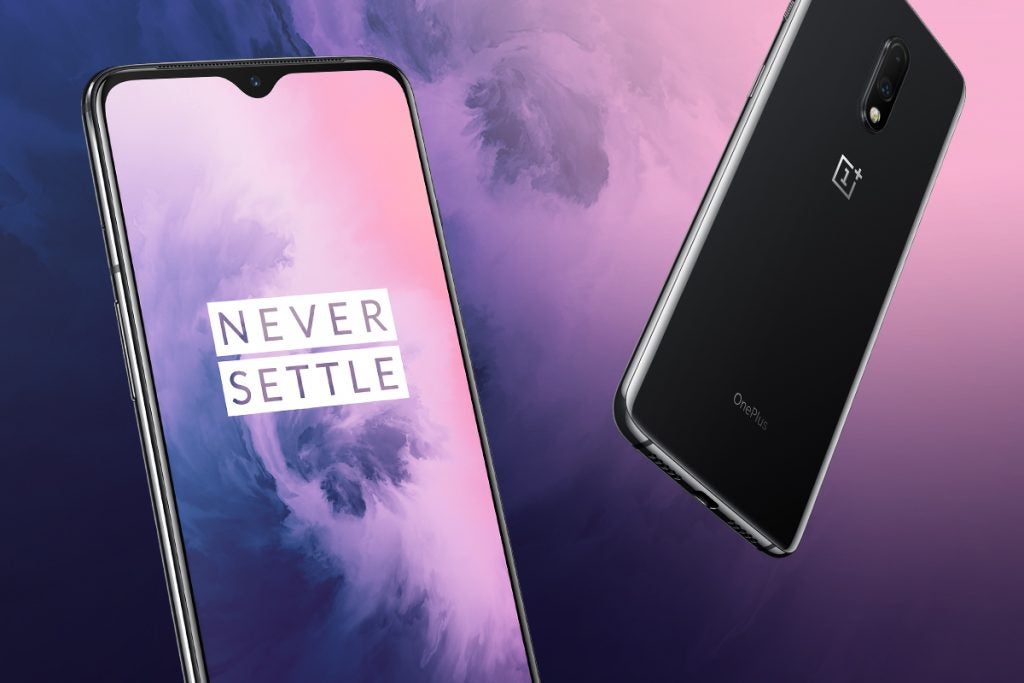OnePlus 7 Pro vs OnePlus 7: 6 big differences you should know about

OnePlus has finally made the OnePlus 7 Pro and OnePlus 7 official. This is the first time the Chinese brand has released multiple phones at the same launch, signalling a new approach.
Instead of offering just one “flagship killer”, OnePlus is now offering two (or three if you’re counting the OnePlus 7 Pro 5G). There’s the OnePlus 7 and OnePlus 7 Pro – but which handset is right for you?
Related: OnePlus 7 Pro review | OnePlus 7 review: hands on
In this OnePlus 7 Pro vs OnePlus 7, we break down the key differences between the two phones including specs, price and camera.

1. OnePlus 7 Pro vs OnePlus 7 – Price and release date are very different
The OnePlus 7 Pro will be released first, officially going on sale on May 21. However, some pop-up shops will have it in for sale sooner. Note that those after the Almond finish of the device will also have to wait a little longer, as that’s coming later.
Prices for the OnePlus 7 Pro are as follows:
- 6GB, 128GB (Mirror Grey) – £649
- 8GB, 256GB (Mirror Grey) – £699
- 8GB, 256GB (Almond) – £699
- 8GB, 256GB (Nebula Blue) – £699
- 12GB, 256GB (Nebula Blue) – £799
The OnePlus 7 will ship in June. Here’s all the pricing information:
- 6GB, 128GB (Mirror Gray) – £499
- 8GB, 256GB (Mirror Gray) – £549
Importantly, the OnePlus 7 won’t be sold in the USA with the Pro model being the only available version of the OnePlus 7 series available.
2. OnePlus 7 Pro vs OnePlus 7 – Comparing the specs
For a comparison of all the specs between the two phones check out the box below.
| OnePlus 7 Pro | OnePlus 7 | |
| Screen | 6.7-inch, Fluid AMOLED, QHD+, HDR10+ | 6.4-inch, AMOLED, FHD+ |
| Display Hz | 90Hz | 60Hz |
| Chipset | Snapdragon 855 | Snapdragon 855 |
| RAM | 6/8/12GB | 6/8GB |
| Storage | 128/256GB UFS 3.0 | 128/256GB UFS 3.0 |
| Camera (Main) | 48-megapixel, f/1.7, OIS | 48-megapixel, f/1.7, OIS |
| Camera (Secondary) | 8-megapixel, OIS, telephoto | 16-megapixel |
| Camera (Ultra Wide) | 16-megapixel | N/A |
| Camera (Front) | 16-megapixel, EIS | 16-megapixel, EIS |
| Battery | 4000mAh | 3700mAh |
| Charging type | Warp Charge | Fast Charge |
| Fingerprint | In-display | In-display |
3. OnePlus 7 Pro vs OnePlus 7 – Screen gets some big boosts on the OnePlus 7 Pro
The display is the standout attraction on the OnePlus 7 Pro. It’s the largest display ever on a OnePlus phone at 6.7 inches, it’s the most pixel-dense, and it has a 90Hz refresh rate. Upping the refresh rate from the usual 60 leads results in a smoother image and is an update that really helps the OnePlus 7 Pro stand out among a sea of flagship phones including the Samsung Galaxy S10, iPhone XS and Huawei P30 Pro.
A step down to the OnePlus 7 will see youu lose most of these clever additions. In fact, the OnePlus 7’s display is the same as the one that features on the OnePlus 6T. It’s a 6.4-inch AMOLED panel with an FHD+ resolution and a couple of screen modes to choose from.
- These are the best phones you can buy right now
Look at the OnePlus 7 Pro’s display and you’ll notice that there’s no notch. Instead, it features a small camera that will pop up when required. The OnePlus 7 includes the same dewdrop notch as seen on the OnePlus 6T.
Inside the display of both phones is an in-display fingerprint sensor. This is an updated version of the sensor first used in the 6T, and it certainly seems a lot faster in use.
4. OnePlus 7 Pro vs OnePlus 7 – Other Pro benefits include faster charging and bigger battery
Since the OnePlus 7 Pro is a bigger phone, there’s room for a more sizeable battery. A 4000mAh cell sits inside the OnePlus 7 Pro, whereas a 3700mAh version powers the OnePlus 7.
Still, it’s worth taking into account that the battery inside the Pro has to keep a much more pixel-dense and larger display running, so whether it leads to improved stamina remains to be seen.
When it comes to juicing up the phone, the OnePlus 7 Pro boasts 30-watt fast charging. This is dubbed Warp Charge and was first introduced on the McClaren edition of the OnePlus 6T. In our tests we found that the OnePlus 7 Pro achieved full charge in roughly 80 minutes.
There’s no Warp Charge in the OnePlus 7, however. This cheaper devices uses the same Fast Charge method as the 6T, which caps out at 18 watts. We’ve yet to review the OnePlus 7, so we’ll update this when we know how long it takes to charge.
5. OnePlus 7 Pro vs OnePlus 7 – The Pro has an extra camera
You aren’t short of cameras on either of the new OnePlus 7-series phones.
As it does in most areas, the OnePlus 7 Pro stands tall as the most specced-out of the bunch. However, it’s important to note that both phones sport exactly the same 48-megapixel Sony IMX586 sensor with an f/1.7 aperture and optical image stabilisation (OIS).
On the OnePlus 7 Pro, that main sensor is paired with two extras sensors: an 8-megapixel telephoto with OIS and an ultra-wide 16-megapixel. There’s also support for 3x optical zoom.
- Want the best photos? Here are the best camera phones
Next to the main sensor on the OnePlus 7 is exactly the same secondary 20-megapixel sensor as the OnePlus 6T.
Both have 16-megapixel cameras on the front, improved low-light photography thanks to the Night Scape mode, and 4K video recording at 60fps.
6. OnePlus 7 Pro vs OnePlus 7 – Both are seriously powerful Android phones with the latest specs
All previous OnePlus phones have shipped with the latest chipsets from Qualcomm, and this remains the case here. OnePlus isn’t releasing the OnePlus 7 with an older – or more mid-range – CPU and it’s even keeping the RAM options fairly similar.
Both phones are powered by the Snapdragon 855 chipset, pack at least 6GB of RAM and 128GB of storage. That storage is also UFS 3.0, with much quicker read/write speeds when compared to the older OnePlus phones. Neither device has microSD expansion.
Want more RAM? The OnePlus 7 pro also comes in an 8GB and 12G flavour, while the OnePlus 7 tops out at 8GB. Storage options for both go up to 256GB.
OnePlus 7 or OnePlus 7 Pro? Which phone do you think is more interesting? Tweet us and let us know @trustedreviews.


